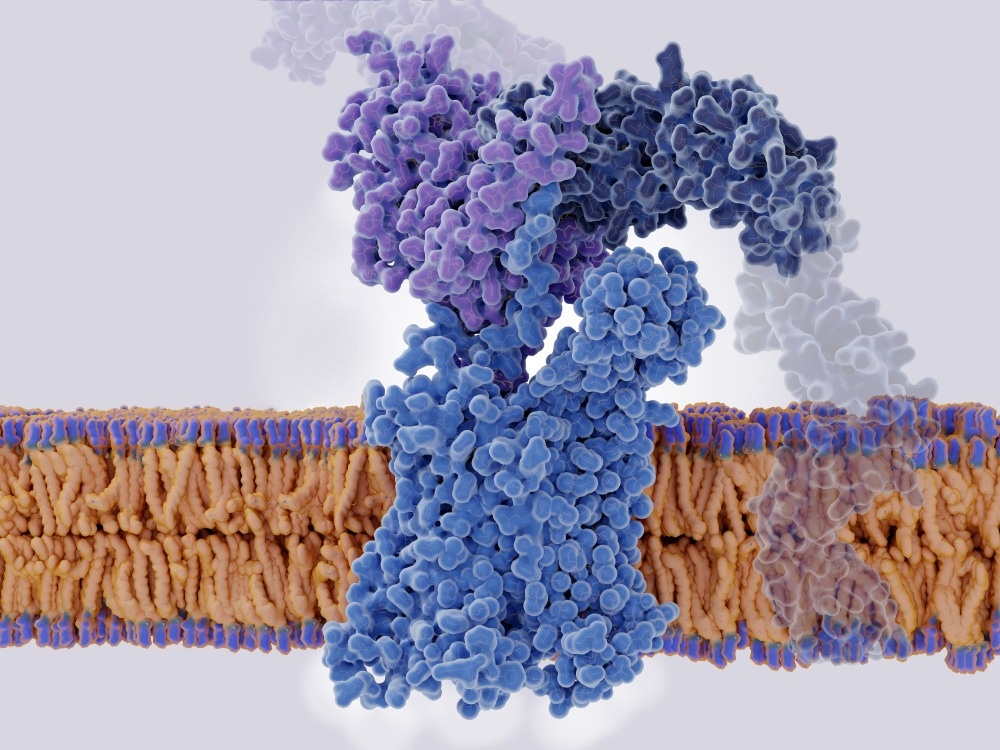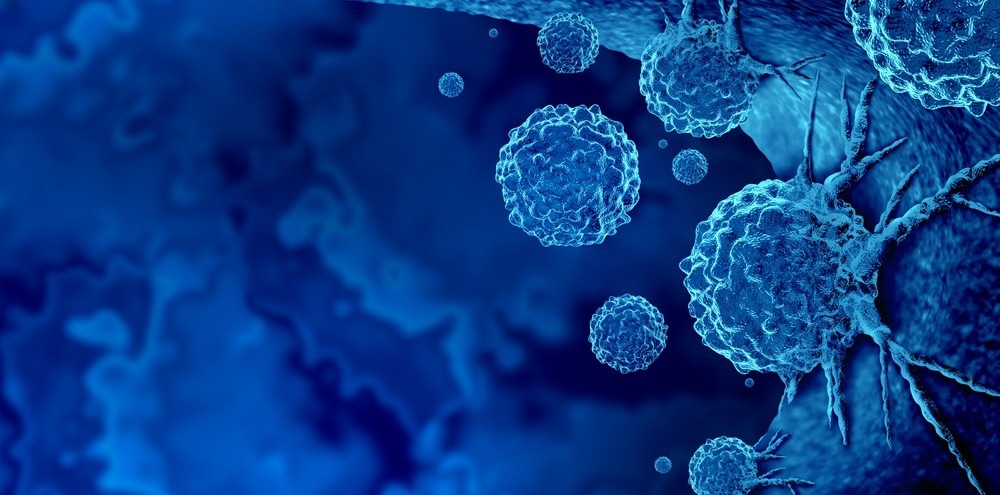Chemokines are structurally related chemoattractant proteins released by the cells to facilitate the migration of immune cells to the site of their release. The movement of immune cells through the chemical gradient in response to the chemokines occurs through chemotaxis. Chemokines are vital in various processes, including regulating lymphoid organ development, T-cell differentiation, and tumor cell metastasis.

Image Credit: Juan Gaertner/Shutterstock.com
Mechanism of chemokine action
Immune cells express receptors complementary to the chemokines on their cell surface. These receptors belong to G protein-coupled receptors (GPCRs).
The extracellular binding of the chemokine to the GPCR on the immune cell triggers intracellular signaling that activates GTPases, which are enzymes that hydrolyze guanine triphosphate (GTP). GTPases produce various downstream effects, including the activation of molecules like integrins, which are involved in cell adhesion, the development of cellular projections as a result of actin polymerization, as well as polarized cell morphology resulting in chemotaxis in response to chemokines.
Classification and nomenclature of chemokines
Chemokines are named based on their amino acid composition. For example, the chemokines with the first two cysteine residues of a conserved tetra cysteine motif are referred to as CC chemokines.
The CC and CXC chemokines form the largest group of the forty-seven currently known chemokines. These chemokines can bind to either of the nineteen chemokine receptors identified on immune cells.
The chemokine GPCRs present in the immune cells will dictate their chemotactic movement in response to a specific chemokine signal. For example, immune cells with CCR7 migrate to lymph nodes that express CCL19 and CCL21.
Chemokines can also be classified according to their function, such as inflammatory and homeostatic chemokines. While inflammatory cytokines like tumor necrosis factor (TNF) recruit leukocytes to the inflamed tissue, homeostatic chemokines are expressed and aid in various physiological processes, including lymphocyte migration and the development of lymphoid organs.
Role of chemokines in cancer
Chemokines play a key role in regulating inflammation. Inflammation in the tumor microenvironment is one of the hallmarks of cancer.
Chemokine receptors are expressed both on healthy normal cells as well as tumor cells; however, tumor cells have altered expression of these chemokine receptors. As a result of this altered expression, tumors often show varying degrees of activation and recruitment of leukocytes, formation of new blood vessels (angiogenesis), cell proliferation, and metastatic profile at various stages of cancer.
Chemokines involved in leukocyte recruitment to the tumor site
Inflammatory cytokines from the CC class, including CCL2, CCL3, and CCL5, as well as the CXC class, including CXCL1, CXCL2, and CXCL5, are released at the tumor site and recruit CCR2+ monocytes and CXXR2+ neutrophils. CCR2+ monocytes and CXXR2+ neutrophils recruited at the tumor site further differentiate into tumor-associated macrophages (TAMs) and tumor-associated neutrophils (TANs).
Both TAMs and TANs can play a pro-tumoral or anti-tumoral role in cancer progression. Similarly, chemokines like CXCL16, CXCL9, and CXCL10 released at the tumor microenvironment can modify leukocyte activation, which can have pro- or anti-tumoral activity.

Image Credit: Lightspring/Shutterstock.com
Involvement of chemokines in angiogenesis
Angiogenesis, which describes the formation of new blood vessels, is another hallmark of cancer. Angiogenesis is crucial in the growth and metastasis of cancers. Chemokines can exert both angiogenic and angiostatic effects in tumors.
CXC chemokines with the glutamic-leucine-arginine (ELR) motif are called ELR+ chemokines, whereas CXC chemokines that do not have ELR motifs are called ELR- chemokines. While ELR+ chemokines like CXCL8 promote angiogenesis, ELR- chemokines like CXCL4, CXCL9, CXCL10, and CXCL11 exert angiostatic activity. Notably, CCL2, CCL11, CCL16, CCL18, and CXCL8 chemokines also facilitate angiogenesis.
Role of chemokines in tumor growth and proliferation
Chemokines that are released by the tumor cells, as well as fibroblasts and infiltrating leukocytes, bind to the chemokine receptors of the tumor cells and promote cell proliferation by activating phosphoinositide 3-kinase (PI3K), AKT, or mitogen-activated protein kinase (MAPK)/ extracellular-signal-regulated kinase (ERK) pathways. Certain chemokines can also prevent apoptosis in cancer cells, thereby promoting tumor growth.
Metastasis
In addition to inflammation, proliferation, and angiogenesis, chemokines also play a role in cancer metastasis. Chemokine receptors such as CCR7 are expressed by cancer cells and encourage their movement to the lymph nodes. Here, chemokines such as CCL19 and CCL21 are produced.
Other chemokines, including CCL27, promote cell adhesion at the metastatic site. Furthermore, cancer cells expressing CXCR4 receptors migrate to organs that secrete high levels of CXCL2 and promote new metastatic lesions.
Chemokines as a potential immunotherapy strategy
Immunotherapy is a rapidly advancing strategy to treat cancers. Various checkpoint inhibitors, adoptive cell therapies, and vaccination approaches have shown tremendous potential in harnessing the immune system to treat cancer.
Current knowledge of chemokines in various aspects of cancer, including inflammation in the tumor microenvironment to the regulation of tumor growth and progression, plays a significant role in developing immunotherapies. To this end, extensive research is being done to target chemokines and their receptors to treat cancer.
Using the anti-CCR4 monoclonal antibody to treat hematological malignancies is already in clinical practice. Strategies to target several other chemokines and chemokine receptors, such as CCR1, CCR2, CCL2, CCR4, CCR5, CCR7, and CXCR2, are also being actively investigated.
Continue Reading: Role of Chemokines and Cytokines in Health and Disease
Sources:
- Vilgelm, A. E., & Richmond, A. (2019). Chemokines Modulate Immune Surveillance in Tumorigenesis, Metastasis, and Response to Immunotherapy. Frontiers in Immunology, 10. https://doi.org/10.3389/fimmu.2019.00333
- Mollica Poeta, V., Massara, M., Capucetti, A., & Bonecchi, R. (2019). Chemokines and Chemokine Receptors: New Targets for Cancer Immunotherapy. Frontiers in Immunology, 10. https://doi.org/10.3389/fimmu.2019.00379
Further Reading